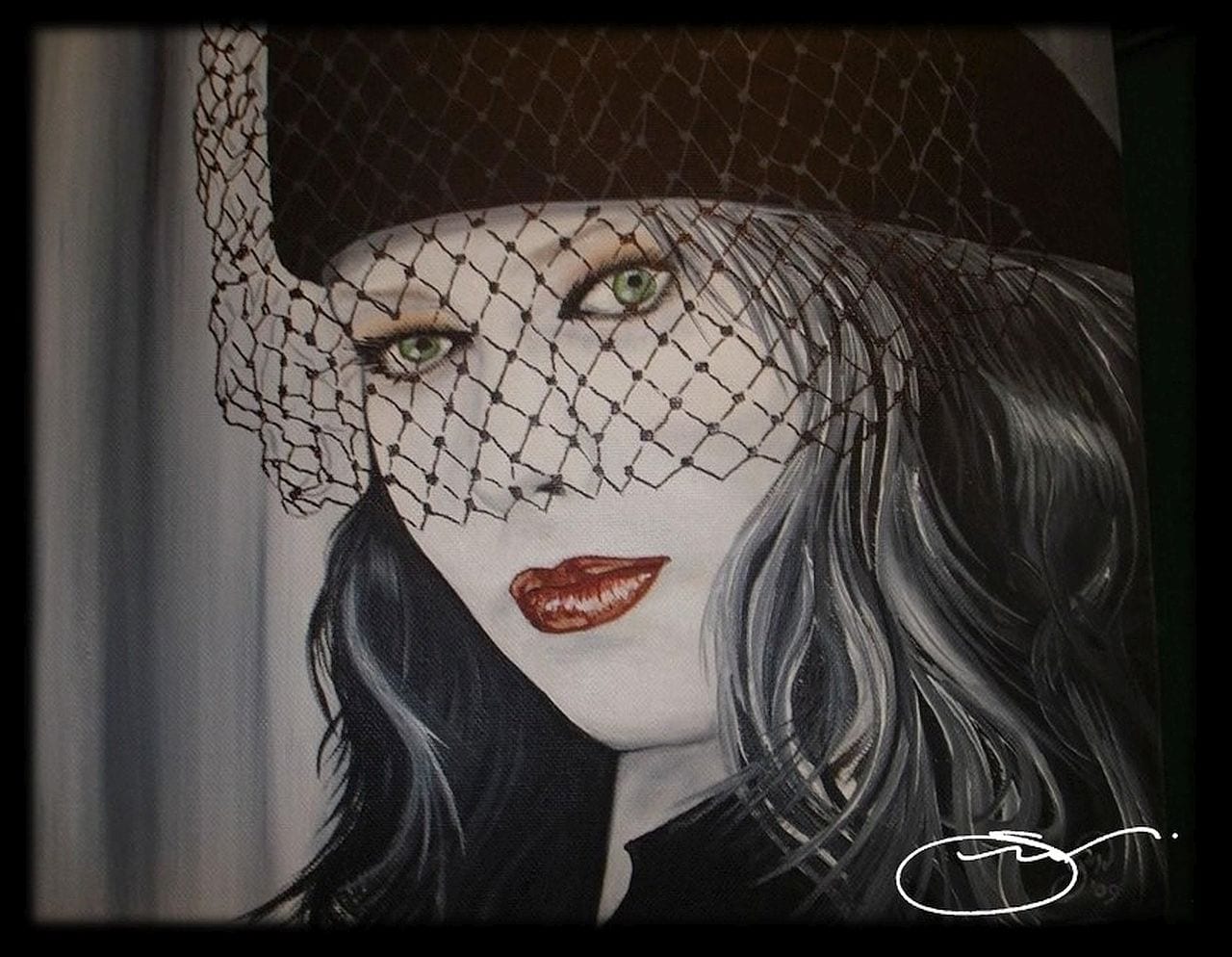Life is a lot like art. We all begin with a blank canvas.
Using art as an example to explain the nuances of life helps us to understand because the power of our imagination provides such an amazing perspective. How it all turns out, in the end, depends upon the choices we make along the way. The colors, styles, textures, and techniques we employ have everything to do with what we end up with. Whether it’s ultimately a masterpiece or a disaster is completely up to you. You can choose to do what it takes to master your craft and create an heirloom or you can make excuses and end up with nothing but regret.
As an artist creating my own images, I’ve discovered five fundamental truths that are universally analogous when applied to life or art. Consider these truths as you strive to paint your life’s masterpiece.
Start with a Goal
 When we formulate a new idea, we are essentially starting with a fresh new canvas or blank page. One of the first things we must know is just what kind of image we intend to create. In other words, in order to know just where it is we’re going, we’ve got to establish a goal.
When we formulate a new idea, we are essentially starting with a fresh new canvas or blank page. One of the first things we must know is just what kind of image we intend to create. In other words, in order to know just where it is we’re going, we’ve got to establish a goal.
The goal-setting process requires a bit of thought and insight that will compel us to consider things such as purpose and intent. How will the successful achievement of the goal serve you or others? What resources, tools, or education will be required? How long will it take? Life calls upon many of the same elements as art to create the final results we seek.
I recommend you start with a sketch that matches the goal you have in mind. As you watch your goal take shape, make the necessary adjustments along the way to refine your vision. Life seldom works perfectly, so don’t be afraid to adjust your goal as needed.
Make the First Move
 Nothing much happens without a goal, at least nothing meaningful or productive. But, in order for anything to happen, you must actually do something. You can do something without a goal, but you subject yourself to getting useless and frustrating results. Think about it. If it’s your goal to paint a picture, you should have a good idea of the actual image you intend to create before you apply the paint. If it’s your goal to paint a specific image, you must be intentional about your goal. Acting on your intended outcome drives your focus, brings clarity of purpose and movement to your plan, and helps you to avoid wasted time and energy, allowing you to better enjoy the process of creating the ideal image. Apply this concept and there’s nothing you cannot create.
Nothing much happens without a goal, at least nothing meaningful or productive. But, in order for anything to happen, you must actually do something. You can do something without a goal, but you subject yourself to getting useless and frustrating results. Think about it. If it’s your goal to paint a picture, you should have a good idea of the actual image you intend to create before you apply the paint. If it’s your goal to paint a specific image, you must be intentional about your goal. Acting on your intended outcome drives your focus, brings clarity of purpose and movement to your plan, and helps you to avoid wasted time and energy, allowing you to better enjoy the process of creating the ideal image. Apply this concept and there’s nothing you cannot create.
Don’t Fear Mistakes (or Opinions)
The more time you spend on your project the better you will become. Keep in mind that no one starts out as an expert. Mistakes are bound to happen. Fortunately, life is forgiving. Most mistakes can be overcome with the right tools, techniques, education, and materials. Don’t be afraid to use the eraser or paint over your mistakes. Doing so makes way for fresh new ideas and can go a long way in accelerating your progress.
Speaking of progress, the important thing to keep in mind is to keep moving forward. Consistency of effort leads to real wins in life. Consider hiring a mentor or taking a course of instruction to minimize your mistakes, accelerate your timeline, and to reduce your learning curve. And never fear the opinion of others. Most unfinished art is difficult for the outside observer to visualize. Unfortunately, most people are quick to judge. Opinions will come and go, but your commitment and determination will go a long way in keeping outside opinions at bay until you’re ready to reveal the finished product. Stay committed and stay courageous and you will create the masterpiece you envision.
Add a Splash of Color and Light
 All work and no play leads to boredom and burnout. Consider adding color or light (or both) to your image in the form of something new, different, exciting, disruptive, and fun. These elements bring balance and joy to the process of creating the masterpiece we all aspire to behold.
All work and no play leads to boredom and burnout. Consider adding color or light (or both) to your image in the form of something new, different, exciting, disruptive, and fun. These elements bring balance and joy to the process of creating the masterpiece we all aspire to behold.
I’ve seen some amazing black and white masterpieces. As an artist, I’ve even created a few family heirlooms that are essentially black and white. It’s my specialty. On these specific pieces, instead of color, I have used the power of light to strike interesting contrasts against the images on the canvas. Some have claimed “seeing color” in these heirlooms even as no other color is present. The point is to seek opportunities to be bold, daring, and unique with the images you intend to create for your life. While we cannot always predict when these opportunities will arise, we can create a prepared mindset that gives us permission to act when the opportunity presents itself. The use of color and light provide the balance we need to enjoy the process of creating the masterpiece of our intention.
Own It (Sign Your Work)
 Most artists sign their work. Their signature is typically a final step in the creation process and serves as a statement that declares ownership. In the end, your masterpiece—and your position in life—is the culmination of the decisions you make along the way. It is ultimately your responsibility to do whatever is necessary to create the image you envision. If you’ve done your best, you have every reason to be proud. So, own it. Sign your work!
Most artists sign their work. Their signature is typically a final step in the creation process and serves as a statement that declares ownership. In the end, your masterpiece—and your position in life—is the culmination of the decisions you make along the way. It is ultimately your responsibility to do whatever is necessary to create the image you envision. If you’ve done your best, you have every reason to be proud. So, own it. Sign your work!
What about you? Are you ready to create your masterpiece? Consider using some or all of the truths I’ve laid out here today to create the masterpiece for your life.
Until next time…
I’m Gary Westfal, reminding you to…









